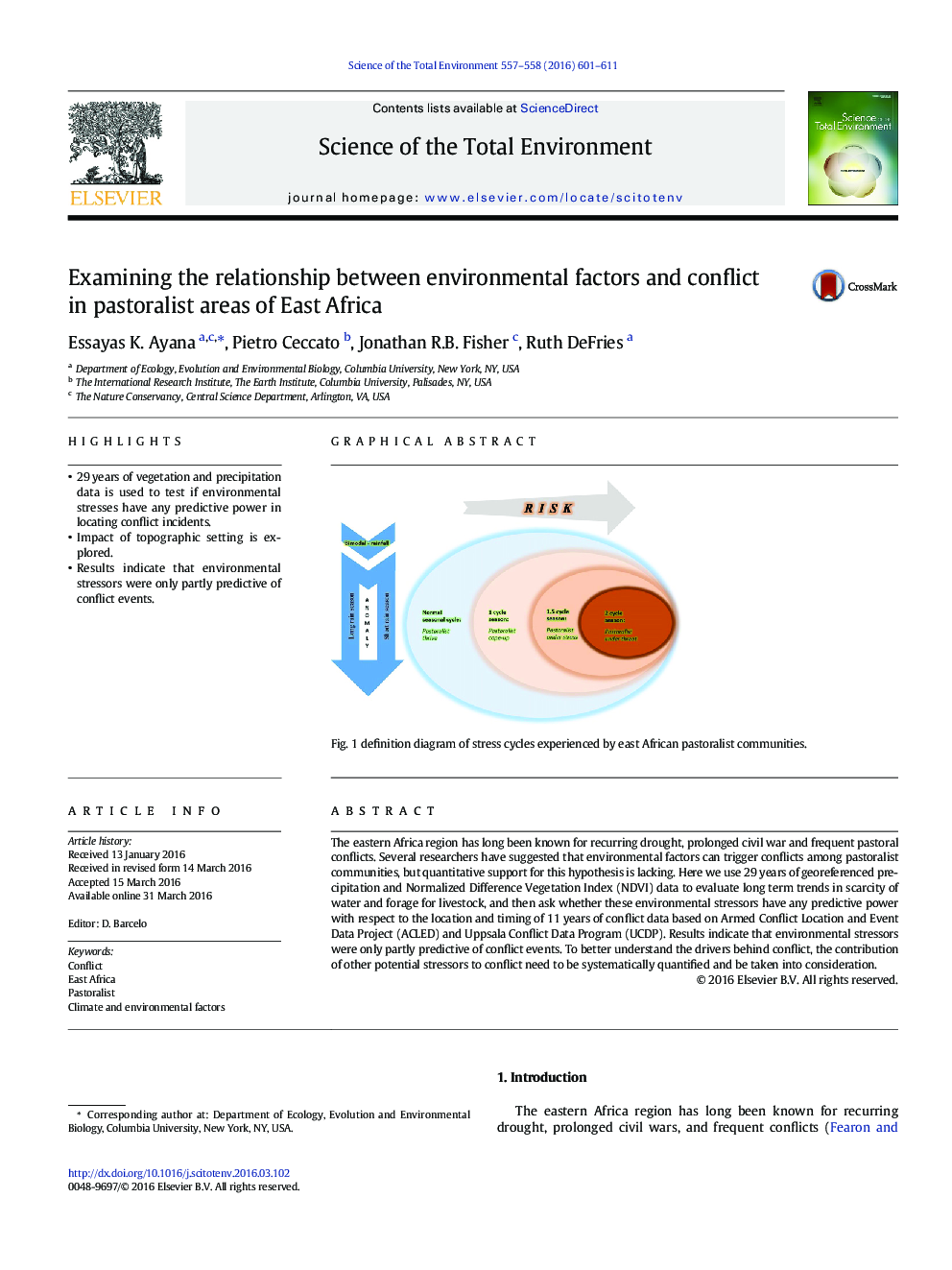| Article ID | Journal | Published Year | Pages | File Type |
|---|---|---|---|---|
| 6322590 | Science of The Total Environment | 2016 | 11 Pages |
â¢29 years of vegetation and precipitation data is used to test if environmental stresses have any predictive power in locating conflict incidents.â¢Impact of topographic setting is explored.â¢Results indicate that environmental stressors were only partly predictive of conflict events.
The eastern Africa region has long been known for recurring drought, prolonged civil war and frequent pastoral conflicts. Several researchers have suggested that environmental factors can trigger conflicts among pastoralist communities, but quantitative support for this hypothesis is lacking. Here we use 29Â years of georeferenced precipitation and Normalized Difference Vegetation Index (NDVI) data to evaluate long term trends in scarcity of water and forage for livestock, and then ask whether these environmental stressors have any predictive power with respect to the location and timing of 11Â years of conflict data based on Armed Conflict Location and Event Data Project (ACLED) and Uppsala Conflict Data Program (UCDP). Results indicate that environmental stressors were only partly predictive of conflict events. To better understand the drivers behind conflict, the contribution of other potential stressors to conflict need to be systematically quantified and be taken into consideration.
Graphical abstractFig. 1 definition diagram of stress cycles experienced by east African pastoralist communities.Download high-res image (126KB)Download full-size image
